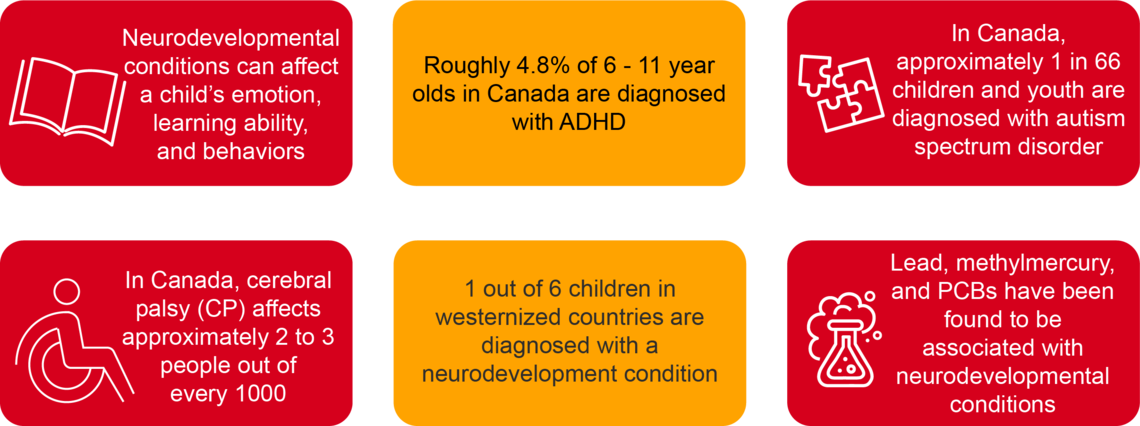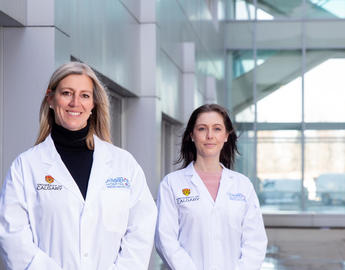What is Neurodevelopment?
Neurodevelopment is a broad term used to describe the formation of the neurological connections and pathways in the brain. These pathways control performance and functions such as memory, attention, social skills, focus and more. Influences on these neurological pathways can impact the way a person’s brain develops. Examples of conditions resulting from impacts to neurodevelopment include but aren’t limited to: Autism, ADHD, cerebral palsy, and vision or hearing impairments.
If you would like to contribute to further research on causes and treatments of neurodevelopmental conditions, please visit our donation page.
Quick facts

Research Highlights
- Gestational Exposure to Common Endocrine Disrupting Chemicals and Their Impact on Neurodevelopment and Behavior
This study summarizes the major literature findings of endocrine disruption of neurodevelopment and concomitant changes in behavior by four major endocrine disruptor classes: bisphenol A, polychlorinated biphenyls, organophosphates, and polybrominated diphenyl ethers. Read the full study in the Annual Review of Physiology here. - UCalgary scientists discover genetic condition linked to developmental disorders in children
Basic and clinical researchers team up to better understand rare diseases. Read the full study in Cell Reports here. - Bridging the Gaps in the Study of Typical and Atypical Cognitive Development: A Commentary
The articles in this special issue of the Journal of Cognition and Development examine the cognitive development of children who are following typical and atypical developmental pathways. Read the full issue in Journal of Cognition and Development here.









